Below you can find PDFs and video recordings of the topics we covered in the intro to low-tech process-based restoration virtual workshop. Use the navigation menu to jump to a specific topic. Each is licensed with a Creative Commons licence, so you are free to, share, adapt re-use subject to the terms of the license.
Introduction to Low-Tech Process-Based Restoration
Module 1 Video Playlist
Watch entire Module 1 YouTube Playlist, or scroll below for individual topics, resources and videos.
Slides & Videos by Topic
A. Logistics
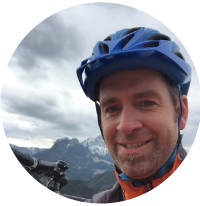 Joe Wheaton goes over the logistics of the first Virtual Workshop for Low-Tech Process-Based Restoration of Riverscapes.
Joe Wheaton goes over the logistics of the first Virtual Workshop for Low-Tech Process-Based Restoration of Riverscapes.
Background : These slides introduce the presenters and explain the logistics of the virtual workshop.
B. Background & Why We’re Here
 To kick off, Jeremy Maestas sets the stage for why we’re here, underscores the scope of degradation, and lays out a shared vision for what is possible
To kick off, Jeremy Maestas sets the stage for why we’re here, underscores the scope of degradation, and lays out a shared vision for what is possible
Background : This talk is based on Chapter 1 of the design manual.
Video
C. Scope of the Problem
 Joe Wheaton lays out the scope of the problem to be be addressed with riverscape restoration.
Joe Wheaton lays out the scope of the problem to be be addressed with riverscape restoration.
Background : This talk is based on Chapter 1 of the design manual.
Video
D. Missing Reference Condition: Stage Zero
 Colin Thorne explains Stage Zero reference condition and about the importance of thinking outside the channel.
Colin Thorne explains Stage Zero reference condition and about the importance of thinking outside the channel.
Background : This talk is based on Chapter 1 of the design manual.
Video
E. What Riverscapes Could Be
 Mark Beardsley asks us to reimagine what a healthy riverscape could be in the Low Tech Process Based Restoration of Riverscapes Workshop.
Mark Beardsley asks us to reimagine what a healthy riverscape could be in the Low Tech Process Based Restoration of Riverscapes Workshop.
Background : This talk is based on Chapter 1 and Chapter 4 of design manual.
Video
Panel Discussion & Quiz
F. What You Came For - Your First BDA
 Joe Wheaton walks us through an exercise of building BDAs (Beaver Dam Analogs) in a parking lot.
Joe Wheaton walks us through an exercise of building BDAs (Beaver Dam Analogs) in a parking lot.
Background : Details from this talk can be found in the LTPBR Pocket Guide & Chapter 4 of the design manual, and the Parking Lot Low-Tech Structure Building Page .
Video
G. Broad Umbrella of Low-Tech Restoration
 In this lecture, Jeremy Maestas introduces low-tech structures and talks about thier origins and effectiveness in restoration.
In this lecture, Jeremy Maestas introduces low-tech structures and talks about thier origins and effectiveness in restoration.
Background : This talk is based on Chapter 1 & Chapter 4 of design manual.
Video
H. Post-Assisted Log Structures (PALS)
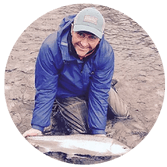 Stephen Bennett dives into low-tech structures talking about Post-Assisted Log Structures, the different types of PALS and when and where they are useful in restoration.
Stephen Bennett dives into low-tech structures talking about Post-Assisted Log Structures, the different types of PALS and when and where they are useful in restoration.
Background : This talk is based on Chapter 1 & Chapter 4 of design manual.
Video
I. Beaver Dam Analogues
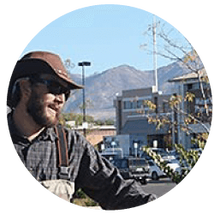 Scott Shahverdian talks about using beaver dam analogs (BDAs) as restoration structures to promote the processes ofbeaver dam activity.
Scott Shahverdian talks about using beaver dam analogs (BDAs) as restoration structures to promote the processes ofbeaver dam activity.
Background : This talk is based on Chapter 1 & Chapter 4 of design manual.
Video
Panel Discussion
J. Principles
 Joe Wheaton goes over the principles of a healthy riverscapes and the principles of low-tech process-based restoration.
Joe Wheaton goes over the principles of a healthy riverscapes and the principles of low-tech process-based restoration.
Background : This talk is based on Chapter 2 of the design manual.
Video
Panel Discussion
K. Beaver History & Biology

 Ben Goldfarb disucsses the history of beaver in the context of process-based restoration.
Ben Goldfarb disucsses the history of beaver in the context of process-based restoration.
Background : This talk is elaborated in Ben Goldfarb’s new award winning book: Eager - The Surprising Secret Life of Beaver and Why they Matter.
Video
L. Beaver Ecology & Feedbacks & Why Beaver Build Dams
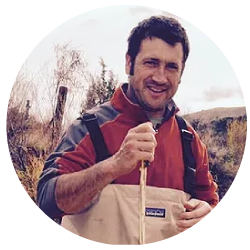 In this section, Nick Bouwes discusses the stars of low-tech process-based restoration: beaver.
In this section, Nick Bouwes discusses the stars of low-tech process-based restoration: beaver.
Background : This talk is based on Chapter 1 & Chapter 4 of design manual.
Video
M. Why Partner with Beavers
 Jeremy Maestas talks about getting on board with beaver restoration.
Jeremy Maestas talks about getting on board with beaver restoration.
Video
Panel Discussion
Questions for the Panel
-
Panel Q & A for Module 1 Panel Discussion 4: Partnering with Beaver
- Question: You seem to be suggesting that beaver were everywhere and are still appropriate everywhere. Where I come from, beaver are just not a socially acceptable option. So what should I do?
Answer: (Mark Beardsley) Beaver did have a historically wide range across most of North America. I do not think that means beavers are appropriate everywhere because many of the historical riverscapes occupied by beavers have been converted to land uses that are no longer compatible. If beavers are socially unacceptable, perhaps try to understand why and see if the reason is something you can work with. I would definitely not recommend forcing beaver restoration on people who don’t want it, but if it is only perception, maybe education is a good approach.
- Question: Can we just mimic beaver dam activity instead of having to have the beaver do it?
Answer: (Mark Beardsley) You can mimic beaver dam activity and probably get temporary benefits, but if you don’t promote the natural processes it won’t be sustainable and you can’t expect long-term recovery.
- Question: What sort of resources are available for mitigating beaver dam activity?
Answer: (Mark Beardsley) Lots! Start here: www.beaverinstitute.org
- Question: How do we address concerns related to flooding roads or culvert blockage?
Answer: (Mark Beardsley) Start here: www.beaverinstitute.org
- Question: You seem to be suggesting that beaver were everywhere and are still appropriate everywhere. Where I come from, beaver are just not a socially acceptable option. So what should I do?
N. Wrap-up and Preview of Remaining Modules
 Joe Wheaton synthesizes Module of the Low-Tech Process-Based Restoration Workshop and lays out the course structure.
Joe Wheaton synthesizes Module of the Low-Tech Process-Based Restoration Workshop and lays out the course structure.

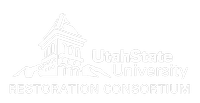
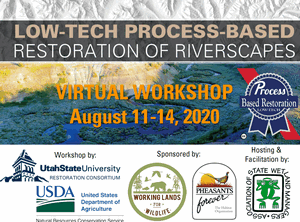
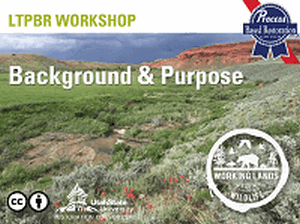
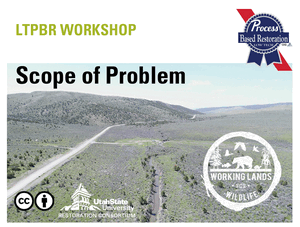

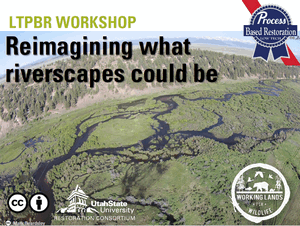
 Go to take the →
Go to take the → 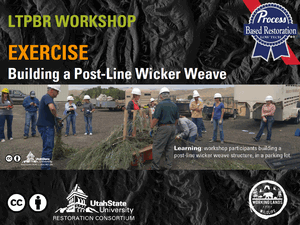

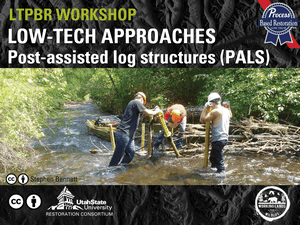
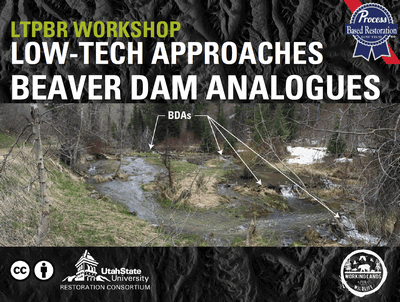
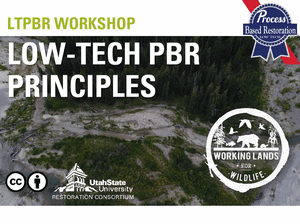
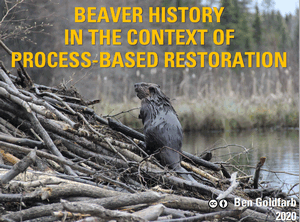
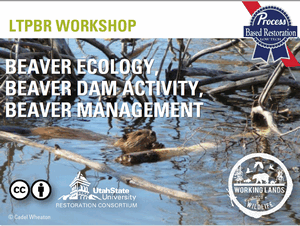
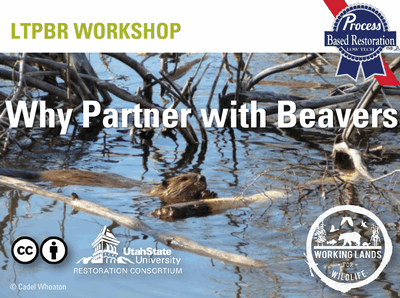
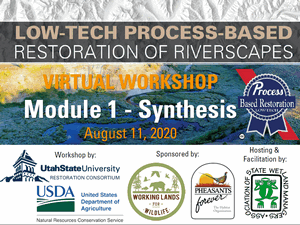
 Back to Virtual Workshop
Back to Virtual Workshop 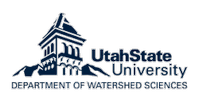 Take this Module for University Credit or Professional CEU
Take this Module for University Credit or Professional CEU